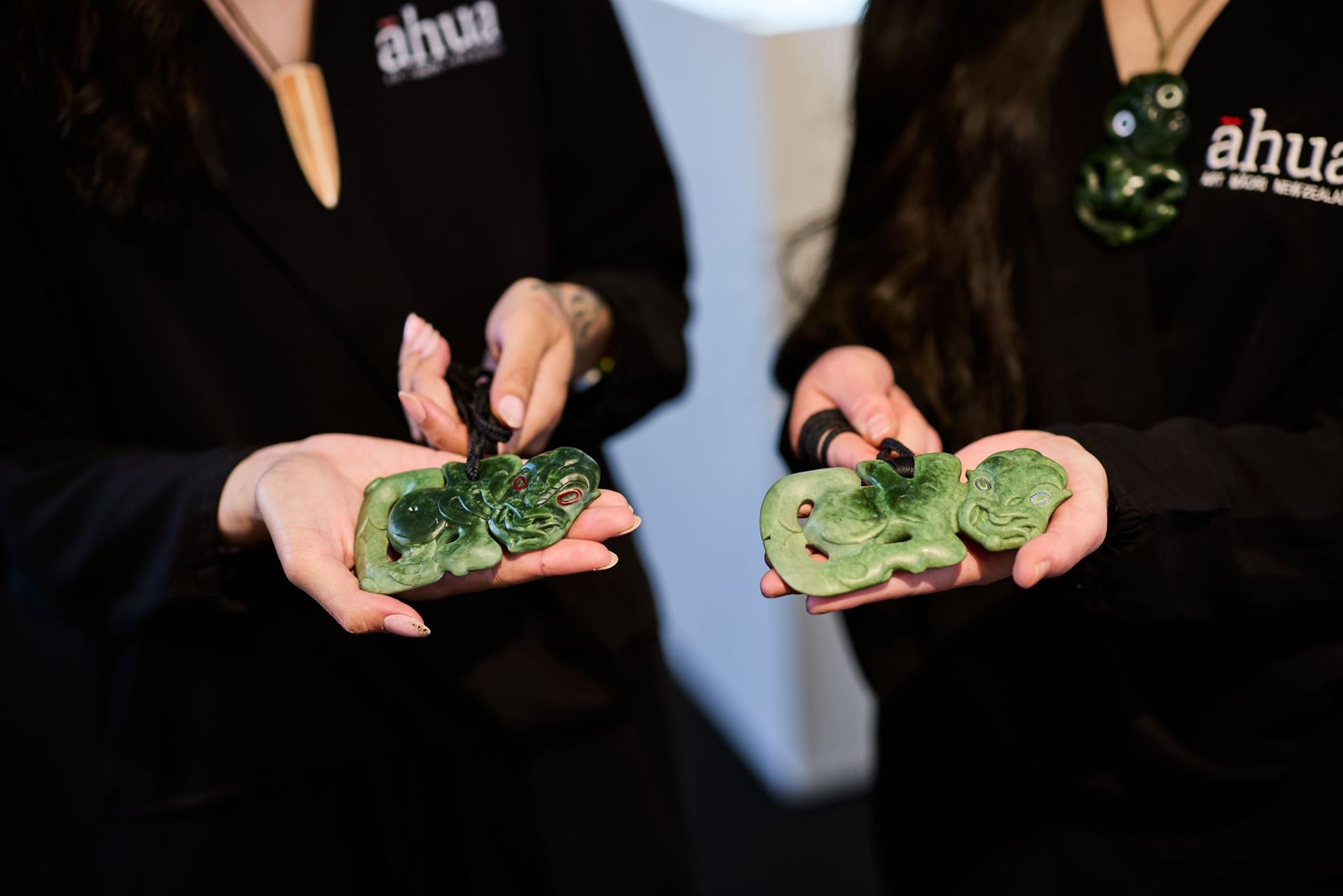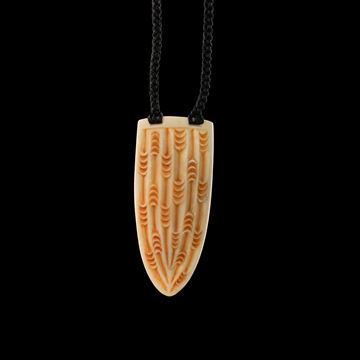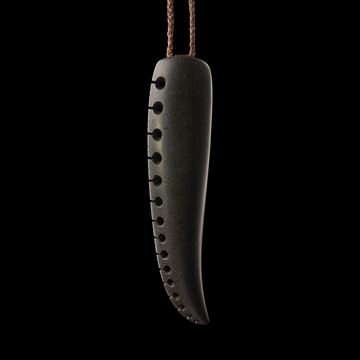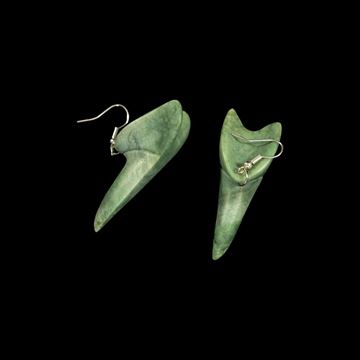
Te Takapū - National Stone & Bone Carving School
Select Subcategory
At Te Takapū, students learn the revered tradition of carving pounamu (Nephrite-Jade/Greenstone), bone and stone.
The school opened on 5 October 2009, expanding on NZMACI’s commitment to maintaining, developing and promoting the arts, crafts and culture of iwi Māori (Māori tribes) as mandated by the New Zealand Maori Arts and Crafts Institute Act (1963) (History).
The school was first led by Lewis Gardiner who is a well-regarded pounamu artist of his generation.
Stacy Gordine, a renowned artist from the East Coast of New Zealand – and uri of Hone Te Kauru and Pine Taiapa – now leads the programme and is shaping the direction of the wānanga into the future.
Would you like something custom made especially for you? Commission a piece here
Rei Niho - 5506IA
The mark of a high Chief was one who wore the hei niho (whale tooth pendant), as the teeth of the sperm whale were highly prized because of their rarity. Usually these pendants had simply etched out eyes to form a head at one end. With actual whale teeth being such a rarity, it became common to fashion the tooth form from other materials.
Material: Koiwi (Beef Bone)
Measurements: 62mm x 26mm x 5mm
$450.00
Hei Niho - 6175KH
Shark teeth were highly sought after to wear as a symbol of prestige for personal adornment. They were reflective of the mana of the shark itself.
Material: Stone (Kaiaua)
Measurements: 150mm x 35mm x 12mm
$590.00
Pekapeka - 6724PD
The Pekapeka (native NZ bat) represents the interwoven nature of the spirit world and the world of the living – the seen and the unseen. The bat was interpreted by Māori as a creature who symbolically acted as an interface between the two worlds and whose physiology (which does not possess the gift of sight) appeared to be guided by the ethereal and the metaphysical.
Material: Pounamu (Tokatea)
Measurements: 47mm x 68mm
$1,300.00
Mako Earrings - 5624KC
Shark teeth were highly sought after to wear as a symbol of prestige for personal adornment. They were reflective of the mana of the shark itself. These earrings are in reference to the Mako shark. Material: Pounamu (Tokaatea Pounamu)
Measurements: 54mm x 22mm
$490.00




